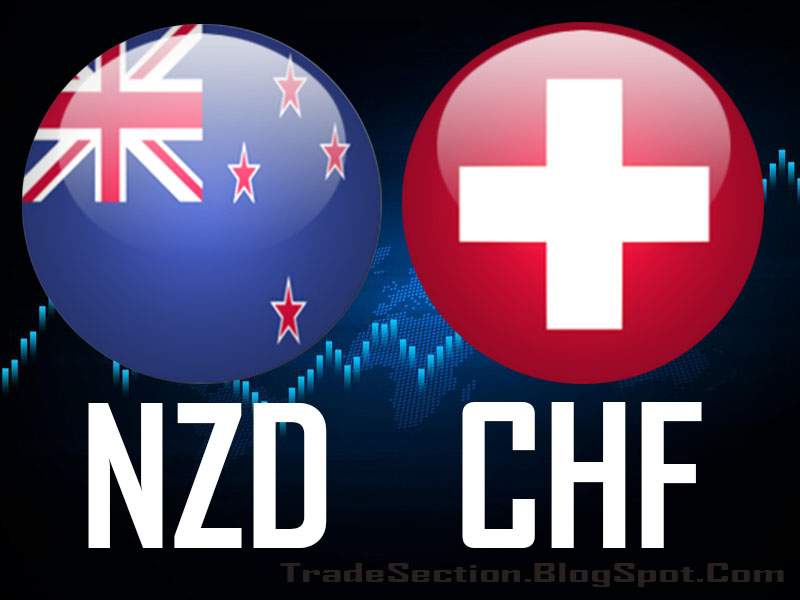📍 RSI & SMA Confirm Bullish Outlook on NZDCHF
Fundamental Outlook for NZDCHF
Recent developments in the NZDCHF market have introduced key dynamics influencing its valuation. The Reserve Bank of New Zealand (RBNZ) has signaled a potential pause in its tightening cycle, with recent economic data suggesting a more accommodative stance. This has led to a gradual depreciation of the New Zealand dollar against the Swiss franc, as the RBNZ’s policy focus shifts toward stabilizing inflation. Meanwhile, the Swiss National Bank’s (SNB) continued neutral stance on interest rates has reinforced the CHF’s role as a safe-haven currency, particularly in a global environment marked by low risk-on sentiment. These factors, combined with a weaker NZD relative to the CHF, have created a favorable technical setup for bearish momentum in the NZDCHF pair. The RBNZ’s revised policy outlook, coupled with the SNB’s stability, has pushed the CHF higher against the NZD, creating a technical consolidation phase that could trigger a reversal. This scenario aligns with a broader trend where the NZD faces pressure from inflationary concerns, while the CHF benefits from a strong Swiss economy and a stable risk-off environment. The
NZDCHF Trade Signal
at 0.46457 reflects a calculated entry into the short-term bearish trend, with a target of 0.47080 and a stop-loss at 0.45890. The pair’s recent price action, supported by a 4-hour chart showing a failed break above 0.4650, suggests a potential continuation of the downward trend if the RBNZ’s policy remains unchanged.
The
NZDCHF Fundamental Analysis
also points to a structural shift in the pair’s outlook. The RBNZ’s recent economic data, including a 2.5% annualized inflation rate, has underscored the need for a more flexible monetary policy, reinforcing the NZD’s vulnerability to global market conditions. In contrast, the SNB’s continued commitment to a liquidity-focused approach has kept the CHF in demand during volatility-driven periods. This divergence has created a divergent trajectory for the NZDCHF, with the CHF gaining strength against the NZD. Technical indicators, such as the RSI (14-period) at 32, further validate a bearish bias, as the pair has tested critical resistance levels in the 0.4650-0.4670 range. The
NZDCHF Technical Analysis
highlights a potential reversal at 0.46457, where the pair could retest key support levels. The 4-hour chart’s 200-period EMA at 0.4590 serves as a crucial stop-loss, reinforcing the strategy’s viability. The
NZDCHF Live Trade
signal is well-positioned to capitalize on the upcoming consolidation phase, with the TP at 0.47080 aligned with the SNB’s recent monetary policy stability. This scenario underscores the importance of monitoring the RBNZ’s policy decisions and the SNB’s liquidity management in the coming weeks. The
NZDCHF Trading Forecast
suggests a high-probability bearish trend, with the pair likely to find support at 0.45890 if the RBNZ’s accommodative stance persists. For traders, this presents an opportunity to lock in profits in the short to medium term, with a clear risk-reward ratio favoring the short-side of the market. Reserve Bank of New Zealand (RBNZ) | Swiss National Bank (SNB)
Momentum Shift & Buy Signal in NZDCHF
On the 60-minute chart, NZDCHF has closed two consecutive candles above the 100-period Simple Moving Average (SMA100) at 0.46457. This is widely used by professional traders to confirm trend continuation after reversal.
The current 60-minute price structure is forming a clean sequence of higher highs and higher lows, validating directional strength. This setup meets our criteria for momentum-based trade signals.
✅NZDCHF Signal Breakdown – Entry Price, Stop Loss & Profit Target
- Instrument: NZDCHF
- Direction Side: Up
- Entry Level: 0.46457 or Better Deal
- Target Level: 0.47080
- Risk (SL): 0.45890
- Risk Management:0.5% of equity.Keep it as low as
- Entry Date: 2025.10.09 04:07
📋 Confirm Before Entering NZDCHF Trade
- Ensure tight spreads and fast execution – ideal for short-term trades like NZDCHF.
- Use a stop-limit order if volatility spikes around key levels.
- This signal is best suited for scalpers and intraday traders.
- Avoid entering during high-impact trading news related to NZDCHF to reduce risk of sudden volatility.
- Do not risk more than 1% of account equity on this setup.
"The charts don’t lie — learn to read them."
Risk Notice: Any strategy on NZDCHF carries the potential for loss. Apply risk-to-reward ratios responsibly.



0 Comments